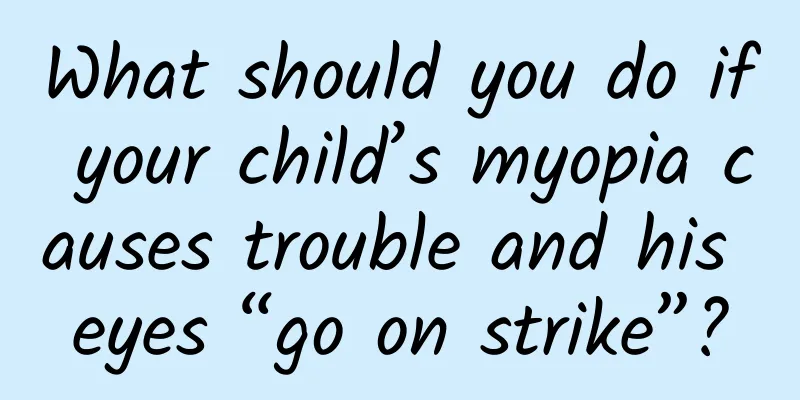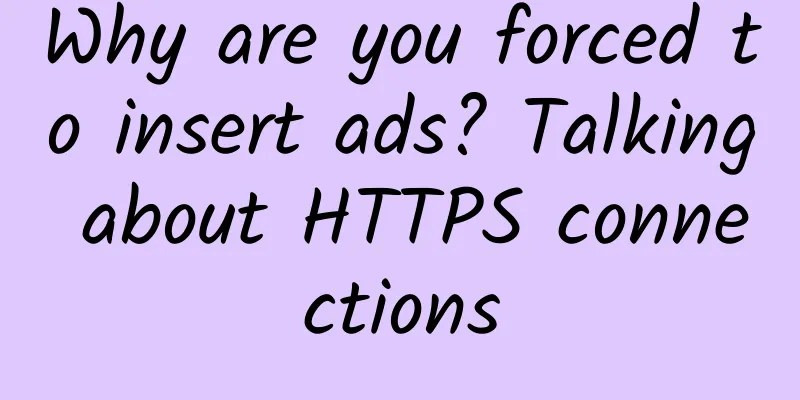What should you do if your child’s myopia causes trouble and his eyes “go on strike”?

|
Dear parents, hello! Nowadays, the speed of technological development is as rapid as a rocket taking off. In such an era, all kinds of electronic products are like a group of spiritual and mischievous "little goblins", circling around children and pestering them endlessly. The frequent appearance of these "little goblins" gives children's myopia, a "naughty ghost" who loves to join in the fun, an opportunity to take advantage of it. It is like an experienced and secretive little spy, quietly sneaking into children's lives when we are not paying attention. Once it sneaks in, it starts to make trouble at will, seriously affecting children's clear perception of the world. However, don't panic. From now on, let's take up our "weapons" and start this challenging and exciting journey of "killing monsters and upgrading". Let's work together to completely drive myopia, this aggressive and arrogant "little monster", out of the children's world and regain the clear, bright and colorful vision for them! 1. Tracing the root cause: Uncovering the cause of myopia 1. The mysterious “curse” of genes In the mysterious field of genetics, myopia has a specific genetic tendency, like a mysterious "curse" passed down in the family bloodline, quietly affecting the vision of future generations. Genes are the "code book" of life, and can be called the "chief designer" in the development of the eyeball, accurately determining the initial structure and development pattern of the eyeball, covering details such as the size of the eyeball and the curvature of the cornea. If both parents are highly myopic, the myopia-related genes they carry will most likely be passed on to their children. Multiple "risk factors" may accumulate in the child's gene pool, like "little bombs" lurking in the body, making the eyeball more susceptible to myopia-related changes. Research has found dozens of genes related to myopia. They are not isolated, but form a complex "gene network". These genes interact with each other like mysterious dancers, jointly determining the fate of a child's vision. Some affect the growth rate of the eyeball, while others interfere with the lens's ability to adjust. Their subtle interactions are like a genetic "symphony", playing different vision "movements". 2. The “sweet trap” of the environment In modern society, children's vision is facing an unprecedented "invisible crisis", and environmental factors are like "crisis pushers behind the scenes", pressing forward step by step. The first to bear the brunt is "close-up use of the eyes". Nowadays, children are often immersed in reading, writing and electronic devices. The ciliary muscles in the eyes are like "elastic regulators". When the eyes are used at close range for a long time, it is like being tightened by an invisible hand and continuously tense and contracted. This is like a rubber band that is always tight and gradually loses its elasticity. The ciliary muscle's ability to adjust decreases, making it difficult for the eyes to focus on objects at different distances, and myopia is likely to occur. The second is the "blue light assassin". Electronic screens are a common sight in children's lives, but the blue light they emit is extremely harmful. Blue light has high energy and can penetrate the lens to attack retinal cells, producing a large number of free radicals. These free radicals are like crazy destructive molecules, damaging the structure and function of retinal cells, interfering with eye metabolism, and causing vision loss. Finally, there is the lack of outdoor activities. Modern children are busy with their studies and have few outdoor activities. Their eyes are trapped in the limited field of vision indoors, like being locked in a "cage". Natural light can stimulate the retina to secrete dopamine and inhibit the excessive growth of the eyeball. Lack of outdoor activities means that the eyes cannot be fully nourished by natural light, and the eyeball is prone to excessive growth, increasing the risk of myopia. 3. The “invisible killer” of bad habits In children's lives, some bad eye habits are like ghost assassins, silently damaging their eyesight. (1) When a child lies prone to read, his body curls up and his eyeballs are in a chaotic "force field". Under normal circumstances, the eyeballs are evenly stressed, which is beneficial to their development. However, lying prone will cause uneven stress on the eyeballs, with the front being squeezed and the back less stressed. If this continues for a long time, the eyeballs are prone to deformation and the eye axis may lengthen, which in turn affects vision, just like when a frame is stretched, the optical effect of the lens changes. (2) Lying down and playing with a mobile phone is also extremely harmful. At this time, the angle between the eyes and the screen changes frequently, the eye muscles need to adjust frequently, blood circulation is also affected, and energy supply is insufficient. In addition, the reflection and refraction of screen light increase, which interferes with the eye's processing of light and increases the risk of fatigue and myopia. (3) Studying in a dim environment is a "cruel test" for the eyes. When the light is insufficient, the eyes are like a traveler groping in the dark, and they have to work extra hard to see things clearly. They adjust the pupils and make the ciliary muscles work harder, which is a huge burden. Over time, the adjustment function declines, and myopia is easy to come. 2. Sharp eyes: catching early signs of myopia 1. Clues of abnormal behavior In the "little world" of children's vision, myopia is like a "mysterious visitor" that will leave "clues" of abnormal behavior in the early stages. (1) Children often squint when looking at distant objects. This is the first "signal flare" of myopia. From an optical point of view, the eyes are like precision instruments, and squinting is like adding a "spotlight". Normal light is scattered, and squinting narrows the eyelid gap, reduces scattering, and allows light to focus on the retina, improving clarity in a short period of time. This indicates that the child's vision may have declined, and this is being used to compensate for it. (2) Frequent blinking is also a "mysterious sign". The eyes are sensitive and will blink to "call for help" when they feel uncomfortable. Long-term use of the eyes will lead to insufficient tears and dry eyes, just like dry land needs water; when vision is blurred, eye muscle fatigue will also cause blinking. Therefore, frequent blinking may be caused by myopia. (3) Rubbing the eyes is an important clue. When children feel discomfort in their eyes, they will instinctively rub them to relieve the discomfort. However, there are many germs on hands, and rubbing the eyes can easily cause infection and may also damage the cornea. If children often rub their eyes, it is likely that they are experiencing early discomfort caused by myopia. (4) If a child watches TV or reads a book too close, or complains that he cannot see the words on the blackboard clearly, this is a "clear warning sign" of myopia. Getting close can make the image of an object larger and clearer, and not being able to see the blackboard clearly is a direct reflection of decreased vision. At this time, parents should take their children to have their eyesight checked in time to ensure that their "vision" is clear. 2. Subtle changes in visual perception In addition to abnormal behavior, children's visual perception will also undergo some subtle changes. They may feel eye fatigue, especially after long-term use of the eyes, and experience symptoms such as soreness, swelling, and pain; they may see double or blurry images when looking at things, and their ability to distinguish colors may also decrease. Parents should carefully observe these changes in their children and discover problems in time. Myopia is like a cunning "invisible opponent". In addition to causing children to behave abnormally, it will also "speak" through subtle changes in visual perception. If parents can catch it, they can discover their children's vision crisis in time. (1) Eye fatigue after prolonged use is the first "warning signal". The ciliary muscle works continuously, like a tireless "laborer", and will "go on strike" after a long time. At this time, the child's eyes are sore and painful. This is the ciliary muscle's "protest" and is also the "prelude" to approaching myopia. (2) Seeing double or blurry images is a more obvious "warning". Under normal circumstances, the various structures of the eye work together to focus light on the retina to form a clear image. Myopia changes the refraction of the eyeball, and the light is focused in front of the retina, so the image becomes blurred, just like a camera with the focus not adjusted properly. Double vision may be caused by a disorder of eyeball adjustment. This seriously affects children's ability to see the world clearly. (3) The decline in children’s ability to discern colors cannot be ignored. The cone cells in the retina are “color detectors”. Myopia inhibits their activity, reducing children’s sensitivity to colors. Bright colors become dim, like a painting covered with gauze. (4) Parents are the “guardians” of their children’s vision. They should pay attention to their children’s eye fatigue, blurred vision, and decreased color discrimination, detect abnormalities in a timely manner, and protect their children’s clear vision. 3. Smart Strike: A Competition of Myopia Prevention and Control Strategies 1. Optically corrected “magic glasses” Once a child is diagnosed with myopia, timely optical correction is essential. Frame glasses are the most common correction method. They are like a pair of "magic glasses" that focus light accurately on the retina through the refraction of the lenses, thereby improving vision. When choosing frame glasses, pay attention to the quality of the lenses, the accuracy of the degree, and the comfort of the frames. Orthokeratology lenses are a more advanced correction method. They are worn at night to change the shape of the cornea, so that you can see clearly even without glasses during the day, and they can also effectively control the rate of myopia progression. 2. Lifestyle habits as the “vision guardian” Developing good living habits is the key to preventing and controlling myopia. Maintain the correct eye posture and follow the principle of "one fist, one foot, one inch", that is, the chest is one fist away from the edge of the table, the eyes are one foot away from the book, and the fingers are one inch away from the tip of the pen. Reasonably control the time of using the eyes. After every 30-40 minutes of continuous eye use, you should rest for 10-15 minutes. You can relax your eyes by looking into the distance, closing your eyes, etc. Increase the time of outdoor activities, ensure more than 2 hours of outdoor activities every day, and let the eyes fully contact natural light, which plays an important role in preventing and controlling myopia. 3. Dietary nutrition "eye protection secret recipe" Dietary nutrition also plays an important role in children's vision health. Foods rich in vitamins A, C, E and lutein, such as carrots, oranges, blueberries, spinach, etc., are like a "secret recipe for eye protection" that can provide the eyes with the necessary nutrients, protect the retina from free radical damage, and enhance the eyes' antioxidant capacity. In addition, a moderate intake of protein-rich foods, such as milk, eggs, fish, etc., helps maintain the normal structure and function of the eyes. 4. Technology helps protect children’s bright future With the continuous advancement of science and technology, more and more new technologies and methods are gradually being applied to the prevention and control of pediatric myopia. For example, smart wearable devices can monitor children's eye behavior and environmental parameters in real time, and remind children to adjust their eye habits in time; virtual reality technology can simulate outdoor activity scenes, allowing children to enjoy the stimulation of natural light indoors; gene therapy technology has also brought new hope for the treatment of myopia, and is expected to fundamentally solve the genetic problem of myopia. Although myopia in children is very aggressive, as long as we understand its causes, detect early signs in time, and take scientific and effective prevention and control measures, we will be able to protect children's vision health, so that their eyes will no longer "strike" and have a clear and bright future. Let us work together to protect children's vision! author: Ma Zhangfang, Chief Nurse of Ophthalmology Department, Beijing Tongren Hospital, Capital Medical University Sha Ying Head Nurse of Ophthalmology Department, Beijing Tongren Hospital, Capital Medical University Yang Xiaoxiao, Head Nurse of Ophthalmology Department, Beijing Tongren Hospital, Capital Medical University Reviewer: Jing Liwei, Vice Dean of the School of Nursing, Capital Medical University |
<<: Can people with myopia "offset" presbyopia and take off their glasses when they get older?
>>: When your ears and eyes send out these 3 signals, your heart may be "calling for help"!
Recommend
It was once the "twin star" of the Earth, but it has a completely different fate
Venus is a terrestrial planet in the solar system...
How much does it cost to make a candied fruit app in Jinzhong?
Jinzhong candied fruit applet production price 1....
Volkswagen and Mobileye team up to implement autonomous driving and will launch driverless taxi service next year
On October 30, foreign media reported that Volksw...
What is Baidu Wancibaping? How to do it?
What is Baidu Domination? Let me teach you how to...
Anyone can use the live streaming sales-boosting technique to seize the last six months of live streaming dividends! 【Free live streaming script】
Course Catalog: Preliminary lesson: In 2020, ordi...
Tips for building a private domain traffic pool!
Private domain traffic is now a "battlefield...
[National Cancer Prevention and Treatment Week] How to prevent and treat these 5 common infections after colorectal cancer surgery? This article will teach you!
It is reported that despite strict aseptic measur...
Home micro projectors have shortcomings, screenless TVs may be just a concept hype
After more than a year of launching its "scr...
The hometown described by a Ming Dynasty poet with 66 crystals is now recreated with its water charm!
Han Yi, a Ming Dynasty poet, once described the s...
Once in a thousand years! The brightest gamma-ray burst to date, how did the "Insight" and "Jimu" jointly capture it?
At 2 a.m. on March 29, scientists from China, the...
Baijiahao operation, how can Baijiahao novices improve the Baijia index?
1. What is the Baijiahao Index? The Baijiahao Ind...
How to quickly acquire users in a short period of time at zero cost?
This time I want to share how product operations ...
The woman was so anxious about being forced to get married that she became "alkali poisoned"! Please forward this to the loving family
Summer vacation is a great time for the naughty k...
Kuaishou advertising introduction, Kuaishou advertising display, Kuaishou advertising price
Kuaishou is a well-known short video application ...









